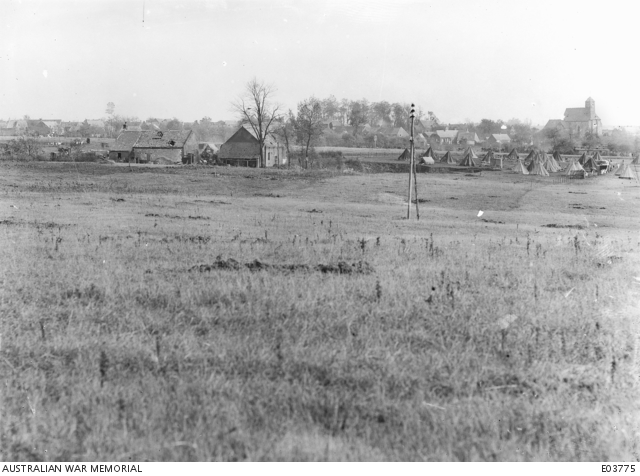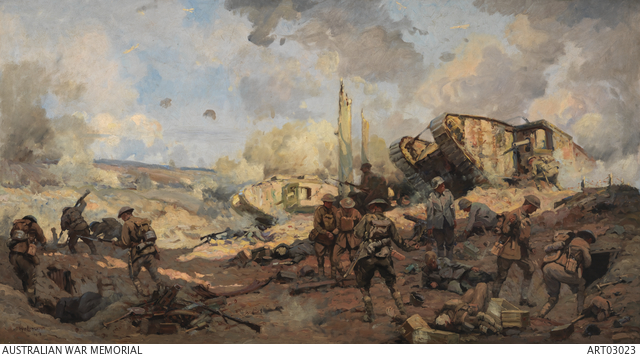A grateful France gave thanks to the 6000 Australian troops
who were casualties at Amiens, battling to save the encroaching Germans. “We bow to you, Messieurs les Australians,
for the magnificent deeds you did on those days, now happily at an end, for
your country and for France, and for the victory of hope and sanity” proclaimed
the Bishop of Amiens, “the soil of France is transformed to a new divinity by
your sacrifices and bravery.”
Such is the acclaim and respect in which the Australians are
held by the community of Amiens after their reprieve from the continual bombings
and the reclaiming of their village.
On 8 August 1918, an attack began on the Somme that would be
staggeringly successful. The Battle of Amiens, an all-arms attack led by
Australian and Canadian troops, captured kilometres of ground and vast numbers
of German men and materiel. From 8 August 1918, the German Army was on the back
foot, the result of what Erich Ludendorff called "the black day of the
German Army". Often regarded as the natural conclusion to Monash's success
at Hamel a month earlier, Amiens was warfare on a staggering scale.
The battle began at 4.20 am with 2070 guns opening up a
“titanic pandemonium” of artillery fire in the heavy mist. The facing Germans were blinded by the heavy
fog and unable to fire accurately and were crushed by the weight of the barrage
of tanks and infantry. The joint forces
of Australian, Canadian, French and British troops made significant gains –
advancing the front by up to 8 miles in some areas.
On the first day of the battle, the allies captured 13 miles
of the front, seized 400 guns, and caused 27,000 casualties to the Germans,
12,000 of these were prisoners of war.
Tank losses on first day were severe: only 155 of the 430
that had gone into action on 8 August were serviceable the following day. And the push slowed significantly in the
following days – however for the Germans, it was the “greatest defeat the
German army suffered since the beginning of the war”.
By 12th August, as the German resistance hardened
– the advance of the British Fourth Army slowed. Only half a dozen of the British tanks were
still in action. Nevertheless, the
manner of the Allied victory at Amiens mattered more than its scale. The BEFs combat skills and confidence were
growing daily at a time when the German Army as a whole was clearly in sharp
decline. Their artillery and machine-gunners
continued to fight, but a morose and fatalistic mood had descended upon many
units.
Bereft on long-term solutions following Amiens, the Kaiser
agreed at a conference at Spa on 14 August, to open peace negotiations through
the Queen of the Netherlands. Even so,
as long as its forces continued to occupy large areas of Belgium and northern
France, Germany might still hope to bargain from a position of strategic
strength.
By 1
st September, the 2
nd Australian
Division, stormed and held the formidable German bastion of Mont St Quentin,
facilitating the capture of Peronne, which was cleared of German troops by
midday on 2
nd September.
Meanwhile, the Canadians broke through the Drocourt-Queant Position, and
as these vital points between the Somme and the Sensee fell in turn, the only
option for the Germans was to retreat from the Hindenburg Line.
 |
| Ballarat Star 1st January 1921 |
 |
|
Private John
Leslie Daniel (6786A)
21st Battalion, who fought at the
Battle of
Amiens, from Daylesford, Victoria
(Photo
courtesy : AWM archive)
|














